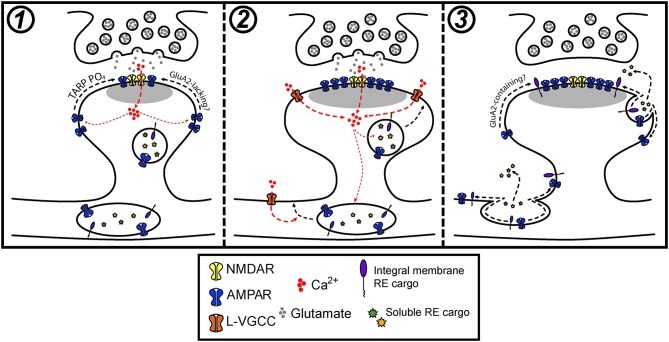Figure 3.
Model for how postsynaptic membrane trafficking regulates AMPA receptor accumulation and stabilization during LTP. (1) The onset of an LTP stimulus promotes Ca2+ entry through NMDA receptors, which drives the initial trapping of pre-existing surface diffusing AMPA receptors at synapses. This can occur through activity-triggered phosphorylation of TARPs and subsequent binding to PSD scaffolds. (2) NMDA receptor and L-VGCC activation cooperatively promote the fusion of intracellular vesicles in dendrites and spines with the PM. (3) Activity-triggered fusion of postsynaptic vesicles delivers key synaptic cargoes, including AMPA receptors and other integral membrane proteins along with secreted soluble proteins to the PM. The delivery of one or a combination of these factors contributes to the stabilization of synaptic AMPA receptors that accumulated during the early stages of LTP.

